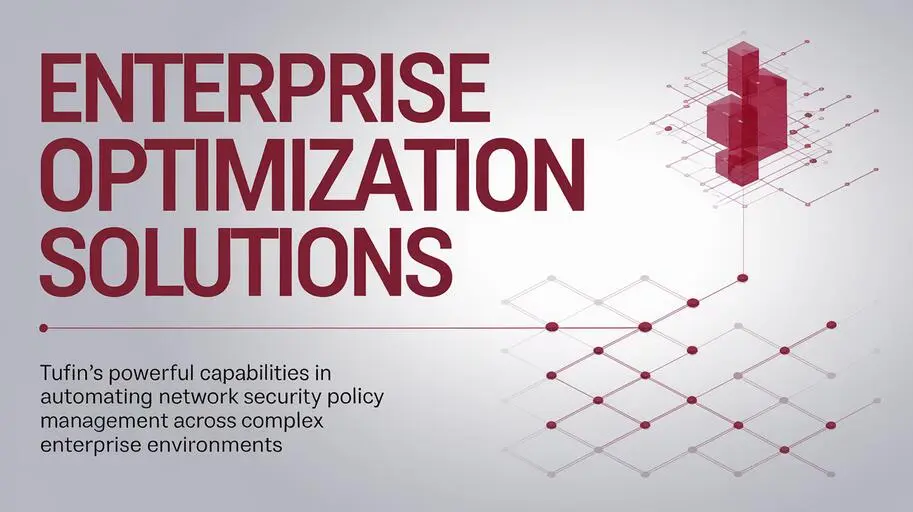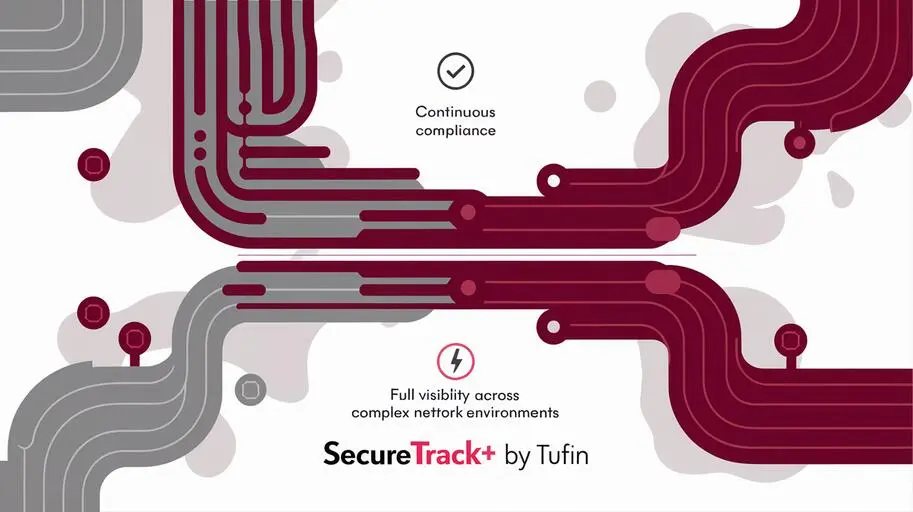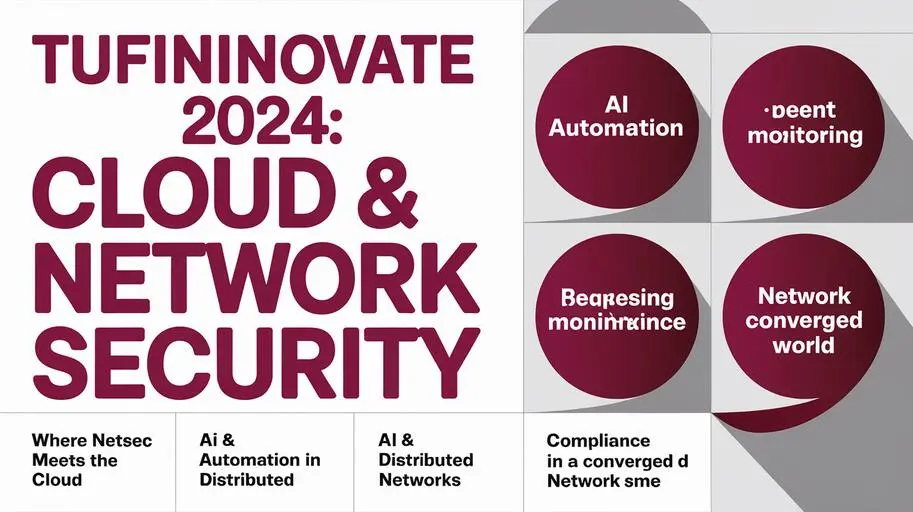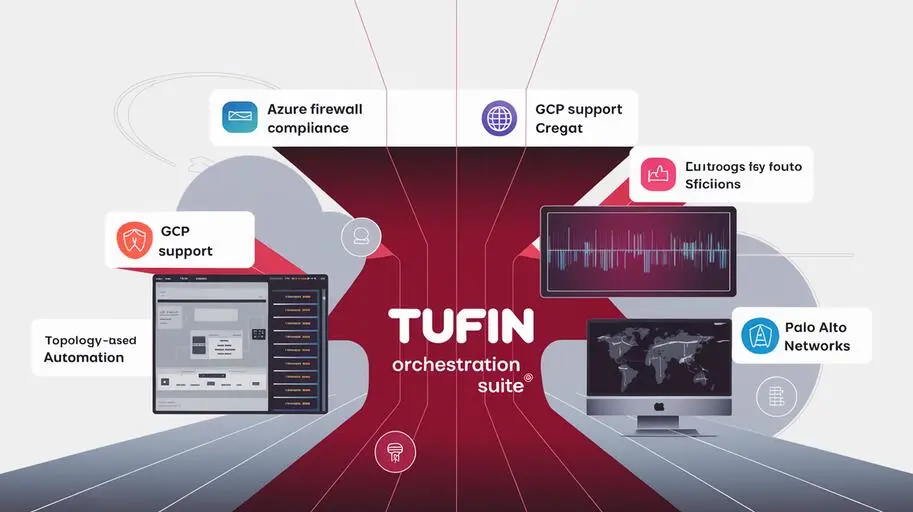
Modern software development, especially in a DevOps environment, is characterized by high speed and flexibility. However, this pace often leads to security concerns being sidelined, creating serious vulnerabilities. Traditional security approaches, based on manual checks and fragmented tools, are no longer adequate for the dynamic DevOps environment. For example, vulnerability remediation times can reach several weeks, and configuration errors and policy inconsistencies lead to security breaches. This is where Tufin comes to the rescue, offering a comprehensive solution for SecOps automation, enabling the integration of security at every stage of the development lifecycle.
Why is SecOps Automation with Tufin Necessary?
Imagine a situation: your DevOps team is rapidly deploying new features and updates, while the security department is trying to track changes, manually checking security policies and compliance. This process is not only laborious, but also prone to errors, which can lead to serious consequences, including data breaches and penalties for non-compliance. For example, errors often occur when changes to firewall rules are missed or regulatory requirements are misinterpreted. SecOps automation with Tufin overcomes these difficulties by providing continuous visibility, control, and compliance across the entire infrastructure. Tufin provides a single interface for managing security policies, automates change approval workflows, and ensures continuous compliance monitoring.
Benefits of SecOps Automation
- Increased speed and efficiency of development: Automating routine tasks allows DevOps teams to implement changes faster without sacrificing security. For example, Tufin allows developers to automatically verify compliance of infrastructure changes with security policies via an API integrated into CI/CD, reducing time for manual approvals.
- Reduced security risks: Automatic detection and remediation of vulnerabilities minimizes the risk of attacks and data breaches. Tufin uses a vulnerability database (e.g., CVE) and analyzes network device configurations for potential vulnerabilities, automatically providing recommendations for their remediation.
- Improved compliance: Tufin helps organizations comply with regulatory requirements such as PCI DSS, HIPAA, and GDPR by providing detailed reports and tools for security auditing. Tufin provides ready-made security policy templates that comply with PCI DSS, HIPAA, and GDPR standards, and generates reports for auditing.
- Cost optimization: SecOps automation reduces the cost of manual checks and remediation of security breaches. Tufin allows you to reduce the time spent on security policy management by X%, reducing personnel costs and reducing the risk of penalties for non-compliance. (Possibly add a case study if possible).
Tufin: Key to Effective SecOps Automation
Tufin is a platform designed for security policy management automation and risk management in complex and hybrid environments. It provides centralized visibility of the network infrastructure, automates policy change processes, and provides tools for risk analysis and compliance enforcement. Tufin uses a centralized security policy database and workflow engine to automate policy change and validation processes.
Key components of Tufin
- Tufin Orchestration Suite: Centralized platform for security policy management, workflow automation, and risk analysis. Uses protocols and APIs such as SSH, network device APIs (e.g., Cisco ASA API), and integrations with SIEM and ITSM systems. Supports various types of network devices, including firewalls, routers, and switches.
Example of API usage: automatic creation of tickets in ITSM when a vulnerability is detected. - Tufin SecureTrack: Provides visibility of the network infrastructure, security policy monitoring, and security auditing. Collects data from network devices using protocols such as SNMP, Syslog, and API. Integrates with monitoring systems to provide a centralized view of the security posture.
Supports a wide range of devices, including Cisco, Check Point, Juniper, Palo Alto Networks, Fortinet. Example of API usage: retrieving information about current firewall rules. - Tufin SecureChange: Automates security policy change processes, ensuring compliance and minimizing risks. Uses a workflow engine to automate the approval and implementation of policy changes. Integrates with ticketing systems to manage change requests. Example of API usage: automatic creation and approval of a policy change request.
Tufin Integration with DevOps: Security at Every Stage
One of the key advantages of Tufin is its ability to integrate with DevOps tools, such as Jenkins, Ansible, and Kubernetes. This integration allows you to embed security into every stage of the development lifecycle, from code creation to deployment in production.
Tufin and Continuous Integration (CI) / Continuous Delivery (CD)
Tufin’s integration with the CI/CD pipeline allows you to automate the security policy check at every stage of build and deployment. This means that any policy violations will be detected and eliminated early on, before they can lead to serious problems. For example, Tufin can automatically check whether the new firewall rules meet security requirements or not.
Example of integration with Jenkins:
pipeline {
agent any
stages {
stage(‘Tufin Security Policy Check’) {
steps {
sh ‘tufin-cli –check-policy –policy-id 1234 –input-file terraform.tf’
}
}
}
}
Tufin checks security policies in CI/CD, using the API to request policies and analyzes Terraform/CloudFormation templates for compliance.
In case of policy violations, Tufin can issue the following error messages in CI/CD:
POLICY_VIOLATION: Rule ‘XYZ’ violates PCI DSS compliance.
SECURITY_RISK: Port 22 is exposed to the internet.
Tufin and Kubernetes: Security for Containerized Applications
Kubernetes has become the standard for deploying and managing containerized applications. However, ensuring the security of Kubernetes requires special attention. Tufin integrates with Kubernetes, providing visibility of network policies (e.g., Network Policies) and security policy management automation in the container environment. This allows organizations to safely deploy and scale containerized applications without sacrificing security.
Tufin discovers and manages Kubernetes network policies, using the Kubernetes API for monitoring and management.
Tufin helps ensure compliance with security policies in a dynamic Kubernetes environment, where network policies can change very frequently, through continuous monitoring and automatic policy enforcement.
Tufin and Ansible: Infrastructure Security Automation
Ansible is a powerful tool for automating infrastructure management. Tufin integrates with Ansible, allowing you to automatically enforce security policies and configure network devices in accordance with security requirements. This greatly simplifies security management in large and complex infrastructures.
Example Ansible playbook using Tufin modules:
- name: Apply Firewall Rule via Tufin tufin_firewall_rule: firewall: "MyFirewall" rule_name: "Allow_SSH" source: "10.0.0.0/24" destination: "192.168.1.10" service: "tcp/22" action: "accept" state: present
Tufin ensures idempotency when applying policies through Ansible, ensuring that policies are applied only once and are not accidentally overwritten, by tracking the status of policies and applying changes only when necessary.
Automating Key SecOps Processes with Tufin
Tufin offers a wide range of capabilities for SecOps process automation, allowing organizations to significantly increase the efficiency and security of their operations.

Automatic Risk Detection
Tufin automatically detects security risks, such as misconfigured firewall rules, network vulnerabilities, and security policy violations. This allows organizations to respond promptly to potential threats and minimize the risk of attacks. Tufin detects open ports, weak passwords, outdated firmware versions, and non-compliance of configurations with security policies.
Uses vulnerability databases such as CVE and proprietary vulnerability databases.
Automatic Security Policy Enforcement
Tufin allows you to automatically enforce security policies on network devices such as firewalls, routers, and switches. This ensures that all devices comply with security requirements and that any changes to the infrastructure do not lead to security breaches. Tufin interacts with network devices to enforce policies, using SSH, API, Netconf.
For rollback in case of errors when applying policies, automatic configuration backup and automatic rollback to the previous configuration mechanisms are used.
Automatic Security Policy Validation
Tufin automatically validates security policies, checking whether they meet security requirements and regulatory requirements. This allows organizations to ensure that their security policies are effective and that they comply with all necessary standards. Tufin verifies compliance of security policies with requirements using formal verification methods and analyzing rules for contradictions.
Tufin helps organizations create security policies that comply with best practices by providing policy templates and recommendations for their configuration.
Automatic Report Generation
Tufin automatically generates reports on the security status of the network, compliance, and other important metrics. These reports help organizations track their security posture and make informed decisions. Examples of reports: compliance reports (e.g., PCI DSS, HIPAA), vulnerability reports, security policy change reports. Supported report formats: PDF, CSV, XML.
Practical Examples of Tufin Use
To better understand how Tufin can help your organization, consider a few practical examples of use.
Example 1: Automation of Firewall Policy Changes
Imagine that you need to change a firewall rule to allow access to a new application. Instead of manually making changes on each device, you can use Tufin to automate this process. Tufin will check whether the change complies with security requirements and automatically apply it to all necessary devices.
The process of automating changes to firewall policies using Tufin:
- Creating a policy change request in Tufin SecureChange.
- Workflow of agreement on changes with the participation of managers or security experts.
- Automatic verification of compliance of the change with security requirements.
Example API call: POST /securechange/request/{request_id}/approve - Automatic deployment of the change to all necessary devices.
Example 2: Ensuring PCI DSS Compliance
If your organization processes credit card data, you must comply with PCI DSS requirements. Tufin can help you ensure compliance with these requirements by providing tools for security policy monitoring, security auditing, and report generation.
Tufin helps to fulfill the following PCI DSS requirements:
- Requirement 1: Install and maintain a firewall configuration to protect cardholder data.
- Requirement 2: Do not use vendor-supplied defaults for system passwords and other security parameters.
- Requirement 10: Track and monitor all access to network resources and cardholder data.
Examples of security policies that comply with PCI DSS requirements:
- Prohibit access to credit card data from external networks.
- Mandatory authentication using multi-factor authentication for access to network devices.
- Regular verification of network device configurations for compliance with security requirements.
Example 3: Risk Management in the Cloud Environment
If you use cloud services such as AWS or Azure, Tufin can help you manage security risks in the cloud environment. Tufin will provide visibility of your cloud infrastructure, automatically detects risks, and helps you automatically enforce security policies.
Tufin integrates with AWS and Azure, using API, CloudFormation/Terraform to discover and manage resources.
Supports cloud resource types such as VPC, Security Groups, Network ACLs.
Tufin Solutions for SecOps: Your Trusted Partner in Securing DevOps
In conclusion, Tufin is a powerful solution for SecOps automation that helps organizations integrate security at every stage of the development lifecycle. Thanks to its ability to integrate with DevOps tools, Tufin helps to increase the speed and efficiency of development, reduce security risks, improve compliance, and optimize costs. Securing DevOps with Tufin becomes simple and efficient.
Tufin provides organizations with the opportunity not only to respond to threats, but also to actively prevent them, providing proactive protection in a modern dynamic DevOps environment. Thanks to its deep integration with popular development and infrastructure management tools, Tufin is becoming an integral part of a modern DevOps security strategy.
Tufin provides powerful tools for SecOps automation that enable technical professionals to more effectively manage security policies, reduce risks, and ensure compliance in a dynamic DevOps environment.
Learn more about the benefits of SecOps automation with Tufin and how it can help your organization.
contact us today for a personalized consultation and demonstration of Tufin.
Comparison with competitors: Unlike FireMon and AlgoSec, Tufin offers deeper integration with DevOps tools and a wider range of capabilities for automating SecOps processes.
FAQs on the Topic: SecOps Automation with Tufin
-
What is Tufin and how does it help in SecOps automation?
Tufin is a platform designed to automate security policy management and risk management in complex and hybrid environments. It provides centralized visibility into the network infrastructure, automates policy change processes, and provides tools for risk analysis and compliance, allowing security to be integrated at every stage of the development lifecycle. -
What are the main advantages of SecOps automation with Tufin?
SecOps automation with Tufin increases the speed and efficiency of development, reduces security risks, improves compliance (e.g., PCI DSS, HIPAA, GDPR), and optimizes costs through the automation of routine tasks and reducing the costs of remediation after security breaches. -
What are the main components of the Tufin platform?
The Tufin platform includes Tufin Orchestration Suite (a centralized platform for security policy management, workflow automation, and risk analysis), Tufin SecureTrack (network infrastructure visibility, security policy monitoring, and security audit) and Tufin SecureChange (automation of security policy change processes). -
How does Tufin integrate with DevOps tools like Jenkins, Ansible, and Kubernetes?
Tufin integrates with DevOps tools, allowing security to be embedded in every stage of the development lifecycle, from code creation to deployment in production. For example, integration with Jenkins (CI), Ansible (configuration management) and Kubernetes (container orchestration) automates security policy checking at each stage. -
How does Tufin help ensure the security of containerized applications in Kubernetes?
Tufin integrates with Kubernetes, providing visibility into network policies and automating security policy management in the container environment. This allows organizations to securely deploy and scale containerized applications, as well as manage risks in the cloud environment. -
What key SecOps processes does Tufin automate?
Tufin automates risk detection (incorrect firewall settings, vulnerabilities), security policy enforcement on network devices, security policy validation (compliance), and automatic generation of network security status reports. -
How can Tufin help ensure compliance with PCI DSS requirements?
Tufin helps ensure compliance with PCI DSS requirements by providing tools for security policy monitoring, security auditing, and report generation, allowing organizations to track and maintain compliance with credit card data security standards. -
Give an example of automating changes to firewall policies using Tufin.
Instead of manually making changes on each device, Tufin automates the process of changing a firewall rule to allow access to a new application. The platform will verify that the change complies with security requirements and automatically apply it to all necessary devices. -
How does Tufin help in managing security risks in the cloud environment (e.g., AWS or Azure)?
Tufin provides visibility into the cloud infrastructure, automatically detects security risks, and helps automatically apply security policies, allowing organizations to effectively manage risks and ensure security in the cloud. -
What is the benefit of implementing Tufin in DevOps?
The benefit lies in the ability not only to react to threats but also to actively prevent them, providing proactive protection in today's dynamic DevOps environment. Through deep integration with popular development and infrastructure management tools, Tufin becomes an integral part of a modern DevOps security strategy.




